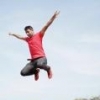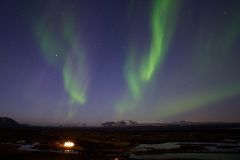Search the Community
Showing results for tags 'Aurora'.
-
This video is created using sequence of photos taken on April 12, 2016 when I witnessed KP index of 5.5. It was a G1 Magnetic Storm on that day, thanks to Sun, Mother Earth and Nature for such a breath-taking dance in Sky. It was like some painter is painting abstract colours, Sky was canvas and Nature was painter. It was taken in Þingvellir anglicised as Thingvellir (or, mistakenly, Pingvellir), founded in 1930. This location is very important as we can see Glacier mountain in background, a Parliament building in front with view of lake and also the Eurasian and American fault line going. This was amazing show. When I created the orginal Video with 6000 X 4000 pixel wide, my laptop gave up, waited for long time to get right tool to scale the size from 20GB video (best quality) to mere 2MB size. I hope you like it, feel free to share if you find worth https://www.youtube.com/watch?v=H0eW_oXp0aE&feature=youtu.be Sony A77Markii + Samyang 14MM F2.8 ISO 1600 Aperture 2.8 Shutter speed 15 sec Metering Pattern Bit depth - 24 Original Size 350dpi Resolution 6000 X 4000 Rendered to 3000 X 2000 (Out put was 20 GB) Total files 310 images Final one is compressed to mere 2MB using 'WinX HD Video Converter Deluxe' to 720 X 480 pixel Some of the files worth sharing from the set of 310 images are here:
-
- Northern Lights
- Aurora
- (and 5 more)
-
I just upgraded from a Canon t2i to the Sony A7ii. Loving the sony world. Looking to purchase an affordable lens for astrophotography. Previously I used the Rokinon 16mm f/2.0, but that only works for crop sensors. So need to upgrade. What do you recommend? I really like the Rokinon lenses, particularly the Rokinon 24mm f/1.4 ($549 USD), but does it make more sense to get a Canon EF mount and just use an adapter. Or is there an advantage to use the Sony E mount.
- 11 replies
-
- Astrophotography
- Stars
-
(and 3 more)
Tagged with:
-
Sharing 4 images here.... intention is to make aware general readers about how easily it’s to identify Meteor, Satellite and airplane in any photograph. I felt lucky to capture all in mere 30 minutes of time in Iceland. I went well prepared to Iceland to capture aurora borealis (Northern Lights)...this time I had wish to capture it. Last time when I saw Aurora was in year 2005 and it was not aurora borealis but Aurora Australis (Southern Lights). I was a student, with no money to buy DSLR. This time I had 3 set ups with me. 1. Sony A7Rmii + Zeiss Batis 25MM F2 2. Sony A7R + Zeiss Touit 12MM F2.8 (APSC lens) 3. Sony A77 Markii + Samyang 14MM F2.8 (Thanks to my friend Nandita who brought it for me from USA) This was done to make sure I am not opening my camera in different temperature thus avoiding chance to have any sort of condensation and moisture entry in the camera body. Temperature was fine, it never dipped below -2/-3 in mid night. I got some exceptional clicks as Mother Earth and Nature was in full mood with Sun to show us a beautiful dance on April 09-10, 2016. With KP index of 3.33 I had good hope for the show and it went higher. I was lucky to witness G1 show again on April 12-13 midnight. Coming back to the date of 09-10... my first day in Iceland... I went with Reykjvik Excursion to 'Þingvellir, anglicised as Thingvellir National Park'. The best show starts usually between 11:00 to 1:00. These photos were clicked between 12:31 to 12:46...using Sony A77 Mark ii + Samyang 14MM F2.8... 1. 'DSC00584_two_Satellites.jpeg' shows two satellites in the image. you can see a straight line at two place, Top-right and other on the bottom side towards left above the snow peak. It can be easily identified. Point to note about satellites is they give us a straight lines (always).... not a dotted line like airplane . Secondly they dont have a round head like meteor. taken at 12:31 AM 2. Taken at 12:36 AM, 'DSC00588_Aeroplace.jpeg'.. See on full screen, you can see a line of dots below Cassiopeia constellation and right of the Pleiades Constellation. Else check in mid of two snow peaked mountains. This is a movement of Aeroplace. 3. Now in this third click (DSC00593_Single_Satellite.jpeg) taken at 12:41 Am, check the constellation called Aquilae (Indian name 'Sravana'). The satellite is there on the top-right of the photo between the brightest star and the top star of the 'Aquilae' constellation. Again a line is captured (straight line). Satellites don't blink like airplane but they reflect the light through their solar panels because of Sun. 4. Fourth click of 12:46 Am 'DSC00598_Meteor.jpeg' clearly shows the meteor captured at top-right side. Location is same - between the brightest star and the top star of the 'Aquilae' constellation. I hope this write up will help novice readers to understand the clear difference between Meteor, Aeroplane and Satellite now.
- 2 replies
-
- Astro Photography
- Northern Lights
- (and 3 more)
-
From the album: Aurora
Aurora was visible from Reykjavik city around 10:00 PM, we head towards National park to have a proper dark and avoid city light pollution. However the horizon was lit till 11:30PM due to late Spring. Our bus went into Þingvellir National Park which has a prominent feature volcanic and tectonic activity, where the promontory creates an extraordinary natural amphitheatre. The site was the home of Iceland's parliament, the Alþing, which was first convened in 930. Þingvellir National Park has the juncture of the North American continental plate and a smaller plate (approx. 10,000 km2) called the Hreppar Microplate (Hreppaflekinn) We stopped at the tourist visitor centre overlooking at plates' junction down overlooking at lake and Iceland's parliament and in background is ice capped mountain. Aurora activity reached at its peak by 11:00 and show was at max on mid-night time and lasted for long time. This day we had a KP index of 5.33+ and whole sky was lit by green colour and different hues of pink, purple, a bit of blue which is rare was visible to naked eyes. Dance was amazing and that is also captured in time lapse.© @ Bhushan Vartak
-
- Landscape
- Astro-photo
-
(and 3 more)
Tagged with:
-
I'm quite happy with how these turned out so I felt like sharing them with you guys! Make me think of cinnamon buns or a crazy wizard waving his staff. A7ii + Laowa 15mm f2 @ f2.8 8s ISO800












